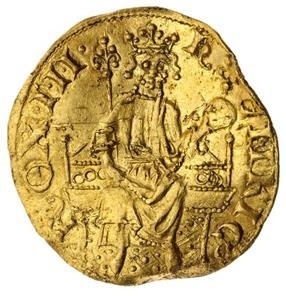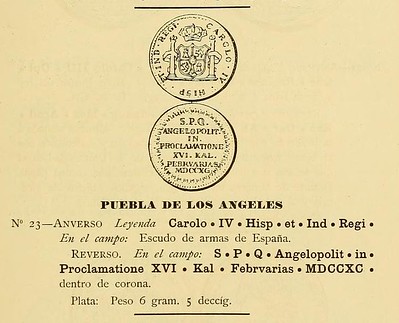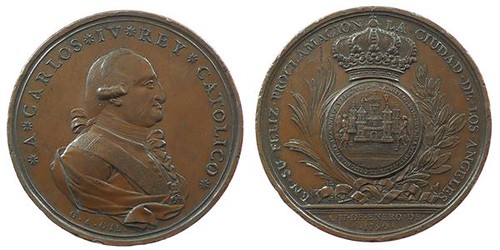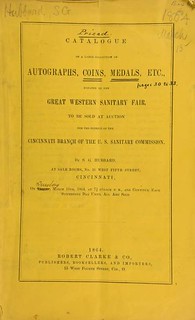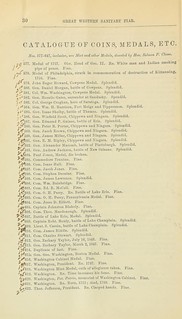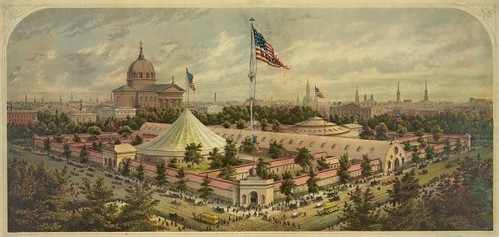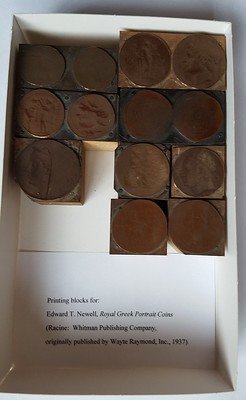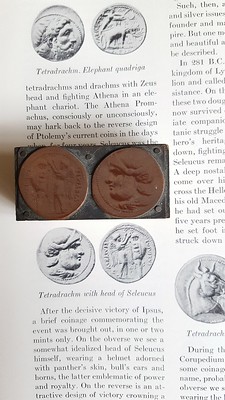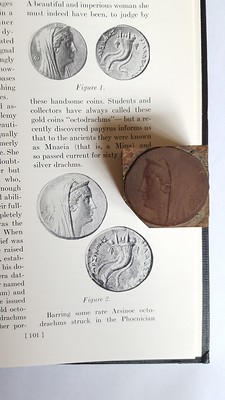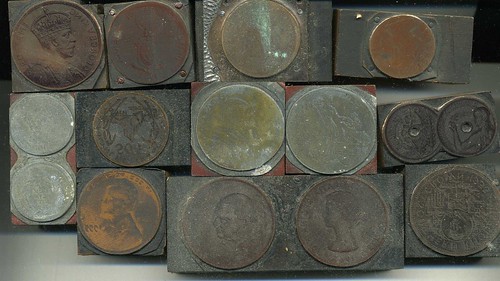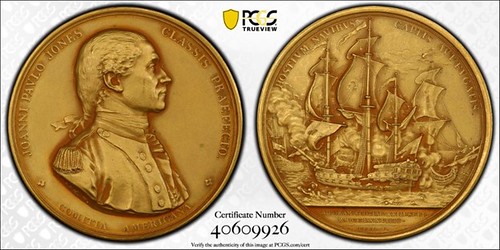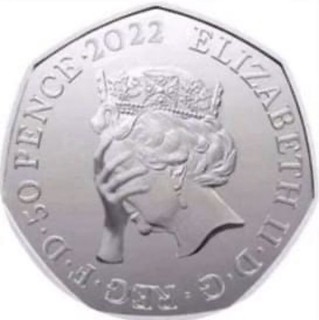
PREV ARTICLE
NEXT ARTICLE
FULL ISSUE
PREV FULL ISSUE
V25 2022 INDEX E-SYLUM ARCHIVE NOTES FROM E-SYLUM READERS: JANUARY 23, 2022
"I was struck by the shape of the E in REX in this piece, compared to the E in HENRIC, for example - it looks more like an O with a partial horizontal line added. Despite only eight examples being known, I've found three different forms of that letter on this denomination in a quick web search, one a more traditional Lombardic E and another looking more like a couple of superimposed S's. The original mintage must have been relatively large, given the existence of multiple die types, so I wonder how many more escaped the melting pot." Good question. Time will tell! To read about the metal detectorist who found it, see an article elsewhere in this issue. -Editor
To read the earlier E-Sylum article, see:
More on Puebla de Los Angeles Last week I wondered if this piece listed in the 1892 book by Alejandro Rosa was from the place we know today as Los Angeles, CA. -Editor Michael Wehner of San Francisco writes: "This very question about whether Puebla de Los Angeles is the California city came up recently in a discussion with Federico Castillo about a medal that Hedley Betts had on his website." Michael continues: "In this case, Puebla de Los Angeles refers to the city of Puebla in the state of the same name in Mexico, not in present day California. It also known as the city of Angels. The medal we were researching is listed in "Medals of Mexico, by Frank Grove" as C-139." Federico Castillo writes: "The population of LA during Carlos IV reign was no more than 1000 and not economically important. Unlikely to have issued such a medal." Thank you. Early American numismatics doesn't begin and end with the 13 original colonies. The well-known Texas Jola and Syd Martin's recent book on French Coinage Specifically for Colonial America attest to that. I was curious to know if there were early numismatic items attributable to California. -Editor
To read the earlier E-Sylum article, see:
U.S. Sanitary Fair Numismatics "If anyone is interested in the numismatic history of Civil War fundraising, there are several examples of coins and medals sold to benefit the war effort as part of the U.S. Sanitary Fair movement. I was reminded of this seeing a bookdealer's offering of the catalog to the coins sold to benefit the Western Sanitary Fair in Cincinnati in 1864. I know there were coins and medals exhibited here in Philadelphia. the Philadelphia fair had a machine on display from the mint which produced tokens for attendees (these are Baker-363a I believe). The New York fair had at least one coin on sale in their curiosity shop." Thanks. Mitch provided a number of links. -Editor
To read the Cincinnati sale catalog on NNP, see:
For more information, see:
Retiring and Quickly Un-Retiring "I found Dave Alexander's comments, expanded from a Coin World Guest Commentary, on Harvey Stack's passing particularly intriguing when he comments that the (unnamed) firm in California that purchased Stack's Bowers - that their employees wondered who Harvey Stack was ( ! ) over the furor of his re-hiring.
"Yes, Sad, but true. A bizarre but thankfully brief episode. -Editor
To read the earlier E-Sylum articles, see:
Whitman Coin Printing Blocks "The printing blocks Dr. Kraft enquires about look very much like some that I purchased a few (6-7?) years ago from a Racine coin dealer at a local coin show. They apparently were disposed of when Whitman closed their Racine operations. The dealer had several dozen; I picked out a few with ancient coin images that were used for Edward Newell's book Royal Greek Portrait Coins as published by Whitman. Unfortunately, I cannot make a match with those Dr. Kraft's correspondent has. The Red Book and Blue Book don't use overlapping images as far as I have found, and I've checked a couple other Whitman books without luck. I suppose they could be from a completely different publisher, but it is an interesting coincidence. "I've attached images of a few of mine." Neat - great to be able to match up illustrations with the printing plate. Nice exhibit material. These Whitman printing blocks have come up in The E-Sylum before. -Editor
To read the earlier E-Sylum articles, see:
Paris Mint Strikes of the John Paul Jones Medal "The US Mint didn't have the dies to the John Paul Jones medal in 1843 or for 20 years after that. That's a Paris Mint strike, probably of late 19th or early 20th century vintage. It should have a mark on the edge near 6:00 that would date it rather precisely." Roger Burdette writes: "Peale's 1843 list of medal dies is clear that the original Jones (and Washington) dies were in Paris; however, it is obvious that he was making electrotypes and copy dies to supply the US market." Peter Jones writes: "I read with interest Robert Whitehead's note that he is collecting Comitia Americana medals — a great and historic series to collect. The best reference I have found is The Stacks Bower's Auction Catalog of John Adams' Comitia Americana medals in November 2019. Written by John Kraljevich, it covers 110 lots in 133 pages with a lot of detail and historical background." Thanks, everyone. And don't forget Peter's own book on Comitia Americana medals, The First Medals of America. It contains a chart of all the different types of medals (which can be quite confusing), how many are known, and their price ranges. See the earlier article linked below for more information. -Editor
To read the earlier E-Sylum article, see:
The "Prince Andrew Commemorative Coin" Arthur Shippee shared this topical "Prince Andrew commemorative coin". Thanks. -Editor
THE BOOK BAZARREWayne Homren, Editor The Numismatic Bibliomania Society is a non-profit organization promoting numismatic literature. See our web site at coinbooks.org. To submit items for publication in The E-Sylum, write to the Editor at this address: whomren@gmail.com To subscribe go to: https://my.binhost.com/lists/listinfo/esylum All Rights Reserved. NBS Home Page Contact the NBS webmaster 
|
